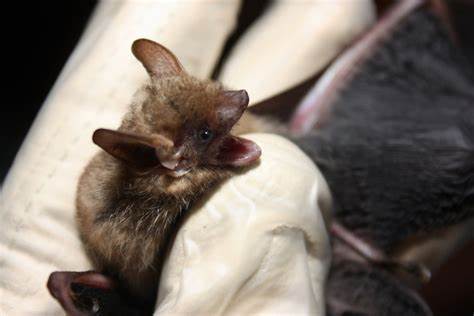In a devastating turn of events, central Texas witnessed a catastrophic impact on its bat population as frigid temperatures in the middle of January proved fatal for hundreds of these winged creatures. The Austin Bat Refuge reported that the plummeting temperatures led to bats falling from their roosts or suffering severe injuries, marking a tragic episode for the local wildlife.
Lee Mackenzie, manager of the Austin Bat Refuge, expressed the severity of the situation, noting that the initial count of affected bats was around 400, but the number increased as more incidents were reported. Even as temperatures warmed up in the days following the freeze, bats continued to fall, attempting to fly despite damaged wings.
Mackenzie provided insights into the distressing scene, explaining that the bats struggled to take flight, realizing that their wings had sustained damage during the freeze. As a result, they fell to the ground, flopping around in a state of vulnerability.
Out of nearly 12,000 bats recovered by the non-profit organization, close to 900 did not survive the ordeal. Mackenzie expressed the profound impact of the situation, describing it as “devastating.” However, he emphasized the importance of proactive intervention, stating, “We hate to see that, but we would hate it even more if nobody did anything to help them.”

Read more:
- California Lawmaker Proposes Speed Limit Technology to Curb Road Deaths
- Tragedy Strikes as Young Dancer Dies from Mislabeling of Peanuts in Cookies
- New Concealed Carry Law Denied by Another Northern California Count
- U.S. Takes Action to Safeguard Whales Around Offshore Wind Farms
The Austin Bat Refuge engaged in the rescue and recovery efforts, managing three different species of bats. Dozens of bats are currently undergoing rehabilitation, receiving specialized care to address their injuries. Mackenzie explained that part of the rehabilitation process involves hydrating the bats with electrolytes and providing them with a blended mealworm diet. The bats are closely monitored throughout this period.
During the rehabilitation, the refuge manager highlighted the positive progress of bats that are ready to return to the wild. He described the distinctive behavior of a bat preparing to fly, stating, “A bat that wants to fly away will arch its back and look up and feel confident and stretch its wings and start flapping, and we can release them.” However, the process is more intricate for bats that exhibit signs of distress and require extended care.
Despite the tragic circumstances, there is a glimmer of hope as nearly 300 bats have been successfully released after completing their rehabilitation. Mackenzie expressed the refuge’s commitment to offering every surviving bat the opportunity to fly free, underscoring the satisfaction of witnessing them take advantage of this chance.
The incident serves as a poignant reminder of the delicate balance in nature and the vulnerability of wildlife to extreme weather conditions. The efforts of organizations like the Austin Bat Refuge play a crucial role in mitigating the impact and providing support for the rehabilitation and release of these remarkable creatures back into their natural habitat.

